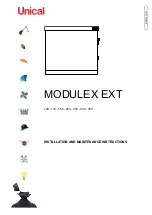
9
Installation and Maintenance Manual
Federal Signal
www.fedsig.com
An Overview of the Model 300MB
Control Circuitry
The control circuitry in the CommCenter has a built-in priority level feature. If a
message is already sounding when a higher priority message is activated, the higher
priority message automatically overrides the lower priority message. When the higher
priority message is deactivated, the lower priority message is initiated as long as it
is still activated. The messages are prioritized with Priority Tone 1 having the highest
priority down to Priority Tone 6. The cascade input has the lowest level of priority.
A message can be activated from the tone activation inputs on TB1. For example, a
dry contact, either normally open or normally closed (depending on the configuration)
will activate a tone when it is connected between the associated message (TB1-1
through TB1-6) and COM (TB1-7). The configuration of these channels is described in
"Input Configuration" on page 8. These inputs are opto-coupled to reduce the
possibility of noise on the signal lines falsely activating a message.
There are two sets of contacts that can be used to monitor the status of a
CommCenter. When power is applied, a relay with form C contacts is activated. These
contacts are connected to TB2 and are labeled Power Monitor Relay. The second set
of contacts monitor activation of any of the six messages or a cascaded input. These
contacts are labeled Push-to-Talk (PTT) Relay on TB1.
Power Requirements
SHOCK HAZARD: Do not perform any installation or maintenance on this
system when power is on. Because the 300MB does not have a power switch,
ensure that the power is disconnected before proceeding. Failure to heed this
warning may cause serious injury or death.
The Model 300MB can be operated on 120 Vac, 240 Vac, or 24 Vdc input power. To
prevent power to the CommCenter from being accidently turned off, the unit does not
have a power switch.










































